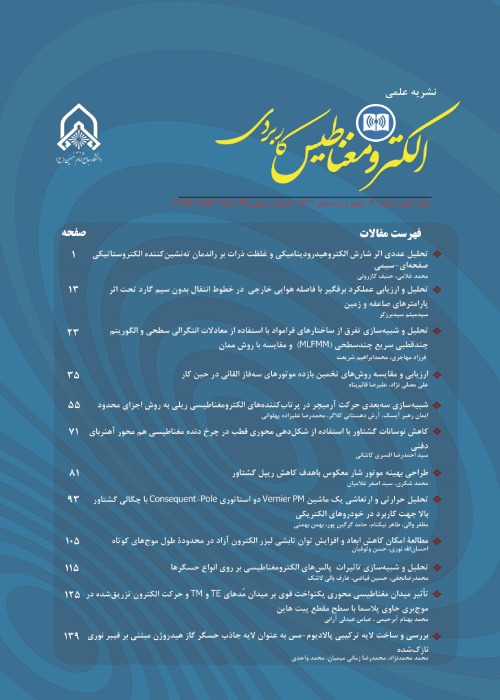Analysis and Simulation of Diffraction from Metamaterials Structures by Using of Surface Integral Equations and Multi-Level Fast Multipole Method (MLFMM) and Comparison with Moment Method
Metamaterial is defined as an artificial, macroscopic, and effectively homogeneous structure (with an average unit cell size much smaller than the guide wavelength). In the electromagnetic literature, the response of a system to an electric or magnetic field is largely determined by the characteristics of the materials in question. Two examples of these microscopic properties are the electric permittivity and magnetic permeability coefficients, both of which are positive in ordinary materials. By arranging an array of metal wires, a negative electric permittivity can be obtained, and by arranging an array of periodic split ring resonator structures, a negative magnetic permeability coefficient can be obtained. To model metamaterial structures, integral equations of electric field or magnetic field are used, which can be studied based on the numerical method of moment. One of the advantages of this method is that it only segregates the source, although the required memory increases in proportion to the size of the geometry of the structure. To solve this problem, today, alternative methods such as fast multipole method (single level and multi-level) are used, which in addition to the source, the basic functions and observation points are also segmented. In this paper, using surface integral equations and multi-level fast multipole method, the diffraction and calculation of scattering fields of some metamaterial surfaces are investigated and the importance of this method compared to the direct moment method is greatly reduced in the computation time, approximately 75%.
-
Compact Monopole Wearable Antenna for Wireless Body Area Network Applications
*, Maryam Darabi
Journal of Researches on Rlectronic Defense Systems, -
Coupling Reduction of Two Adjacent Quad-Ridge Horn Antennas at 20-40 GHz Frequency Range by Using of Wideband Electromagnetic Band Gap Structure
, Arman Bordbar, Anis Moradi Kouchi
Majlesi Journal of Electrical Engineering, Mar 2022



